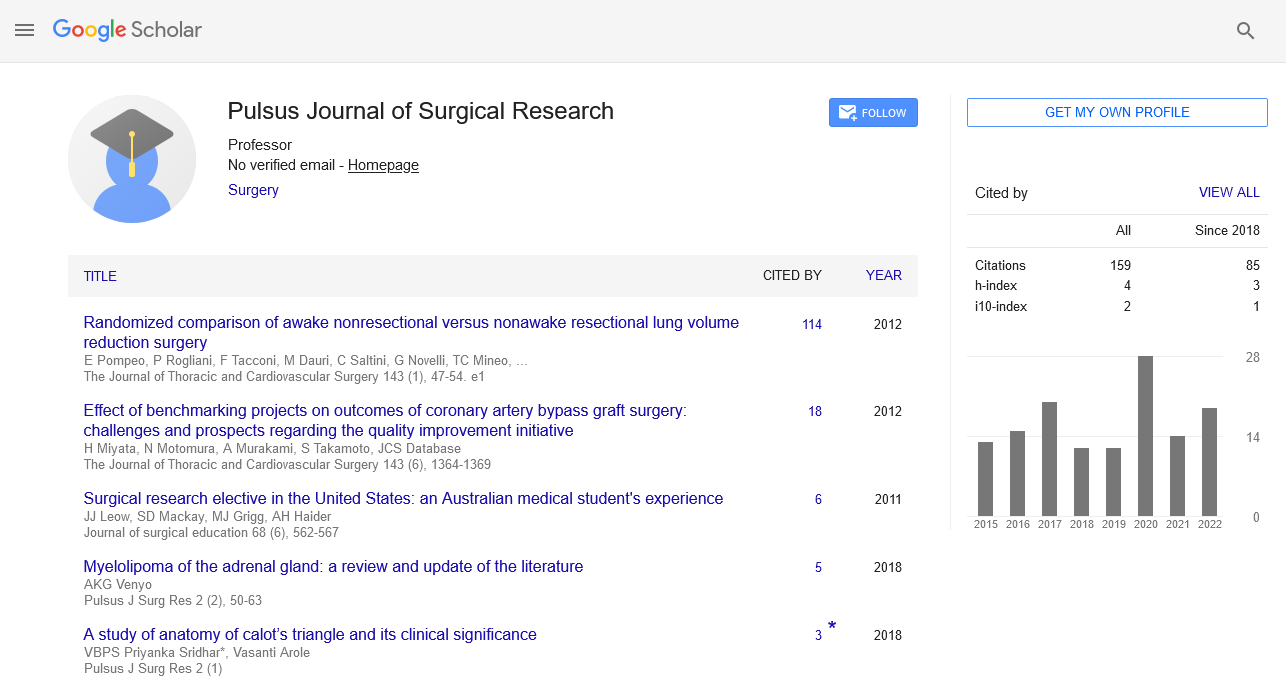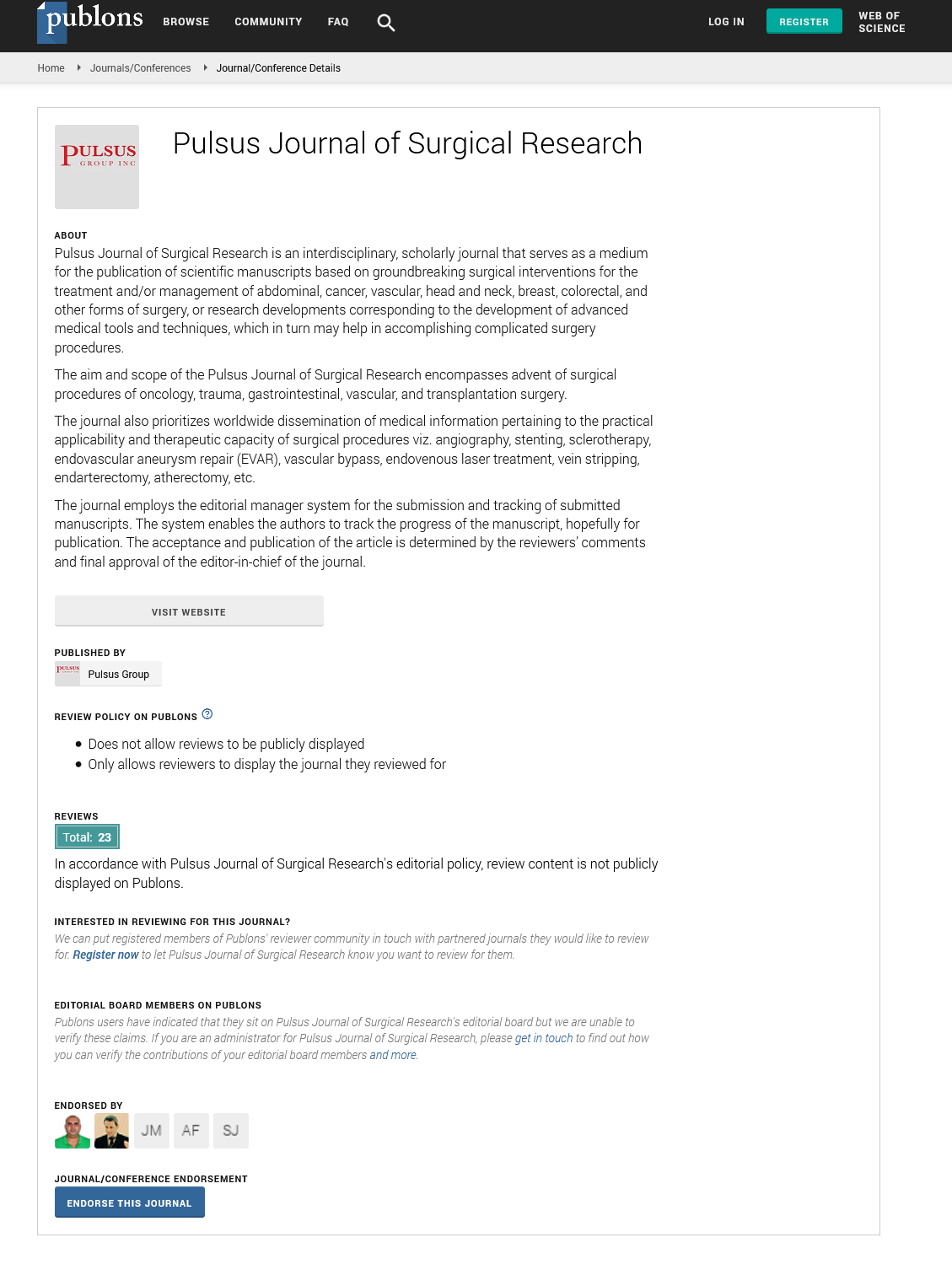Bilateral hearing asymmetry and lateral differences in susceptibility to noise damage
2 Catholic University of the Sacred Heart, Italy, Email: maci@inail.it
Received: 24-Nov-2017 Accepted Date: Dec 02, 2017; Published: 07-Dec-2017
Citation: Lucio Maci, Antongiulio De Belvis, Anna Corinna Assennato, Vinicio Pagano, Mario Tavolar. Bilateral hearing asymmetry and lateral differences in susceptibility to noise damage. Pulsus Journal of Surgical Research. December-2017;1(1):15-16.
This open-access article is distributed under the terms of the Creative Commons Attribution Non-Commercial License (CC BY-NC) (http://creativecommons.org/licenses/by-nc/4.0/), which permits reuse, distribution and reproduction of the article, provided that the original work is properly cited and the reuse is restricted to noncommercial purposes. For commercial reuse, contact reprints@pulsus.com
Abstract
The medical-legal evaluation of asymmetric paths in the field of hearing loss noise is extremely complex and still not unique. The critical issues regarding the definition of asymmetry in the literature are numerous and sometimes seemingly irreconcilable. Scholastically the noise deafness is characterized by being hearing loss perceptive, bilateral and symmetric. The American College of Occupational and Environmental Medicine in 2002 indicates the first two criteria for defining N.I.H.L (Noise Induce Hearing Loss): It is always sensorineural, affecting the hair cells of the inner ear and; it is almost always bilateral. Usually audiometric patterns are similar. Asymmetry supports since most noise exposures are symmetric, the hearing typical loss is bilateral. When evaluating cases of asymmetric loss, referral to rule out in the back-first cochlear lesion is warranted before attributing the loss to noise. The work of Prasad, Sabini and Fernandes state that asymmetrical sensorineural hearing loss (ASNHL) is defined as binaural difference in bone conduction thresholds of >10 dB at two consecutive frequencies or >15 dB at one frequency (0.25-8.0 kHz). This also appears our own convictions. For noble and gatehouse, asymmetry was defined as an interaural difference of blackberries than 10 dB in hearing levels averaged over 0.5, 1, 2 and 4 kHz. Interaural level difference, interaural time difference, direction dependent filtering, minimum audible angle explains how the sound localization can come differently to the two ears. The author aims to classify 10 causes of asymmetry in deafness due to professional noise.
Introduction
The medical-legal evaluation of asymmetric paths in the field of hearing loss noise is extremely complex and still not unique. The critical issues regarding the definition of asymmetry in the literature are numerous and sometimes seemingly irreconcilable. Scholastically the noise deafness is characterized by being hearing loss perceptive, bilateral and symmetric. The American College of Occupational and Environmental Medicine in 2002 indicates the first two criteria for defining N.I.H.L (Noise Induce Hearing Loss): It is always sensorineural, affecting the hair cells of the inner ear and; it is almost always bilateral. Usually audiometric patterns are similar. Asymmetry supports since most noise exposures are symmetric, the hearing typical loss is bilateral. When evaluating cases of asymmetric loss, referral to rule out in the back-first cochlear lesion is warranted before attributing the loss to noise. The work of Prasad, Sabini and Fernandes state that asymmetrical sensorineural hearing loss (ASNHL) is defined as binaural difference in bone conduction thresholds of >10 dB at two consecutive frequencies or >15 dB at one frequency (0.25-8.0 kHz). This also appears our own convictions [1-5]. For Noble and Gatehouse, asymmetry was defined as an interaural difference of blackberries than 10 dB in hearing levels averaged over 0.5, 1, 2 and 4 kHz. For Dobie “Audiograms are usually symmetrical, although modest degrees of asymmetry may be present, especially when there is a clear history of asymmetry of exposure, as in the case of hearing loss from rifle or shotgun use. Asymmetries exceeding 40 dB at any two adjacent standard audiometric frequencies are unlikely to be caused by occupational noise exposure. Interaural level difference, interaural time difference, direction dependent filtering, minimum audible angle explains how the sound localization can come differently to the two ears. The author aims to classify 10 causes of asymmetry in deafness due to professional noise. (Maci, 2015):
• unilateral predominance
• dispersion answered
• interaurale difference
• apoplectic forms
• evolution forms differed
• atypical locations of the deafness in workers statements to a noise with acoustic ghost, that doesn't overcome the limits of the octave and man therefore to sensitively draw near, as action, to that practiced by a pure tone
• mixed forms in which there is a component of deafness of transmission or mixed tied up to extra-professional pathology
• forms of "simulation" or "accentuation"
• audiometric "asymmetrical" from not set “of the audiometer e/o of the bonnets" e/o for environment not soundproofed (es. Pattern audiometric " to free field)
• traced audiometrics with inadequate "acoustic rest".
In the physician-legal check of the asymmetrical curves an important passage it concerns the differential diagnosis with other hearing loss perceptive, that you can introduce such a course. ASNHL is the acronym of Asymmetrical sensorineural hearing loss. It is up to the expert or R.L. or Audiologist to start all those instrumental investigations to discriminate the etiologia and to eventually furnish to the Coroner that elements to confirm or I lead the exclusion of other causes, that it is one of the criterions for the recognition of the connection of causality [6-8].
Conclusion
You physician-legal evaluation of the layouts asymmetrical “deafness for noise” still appears to the state of the knowledge extremely diversified, since there is not unique on the same meaning of the concept of asymmetry. The theories are still very distant among them with the consequence of the lack of homogeneity in the judgments. The entity of the "gap" of the auditory loss, the partiality or the totality of the frequencies to be considered, the complexity of the check of the connection of causality only some of the current challenges constitute on the matter. The new knowledge of physiopathology of the listening binaurale can certainly help to understand better the phenomenon. It appears then essential the dialectical comparison among Coroner and Otorinolaringologist/ Audiologist to face and to discriminate the anterior state of the injured one, the injurious efficiency, the differential diagnosis. Last covers she must concern the normative aspect. The asymmetrical layout must introduce methods and criterions appraised you clear and encoded [9-13].
REFERENCES
- Chung DY, Glenn NW, Gannon RP. Lateral differences in susceptibility to noise damage. Audiology 1983;22:199-205.
- Henderson D, Subramaniam M, Boettcher FA. Individual susceptibility to noise-induced hearing loss: an old topic revisited. Ear Hear 1993;14:152-168.
- Kannan PM, Lipscomb DM. Bilateral hearing asymmetry in a large population. J Acoust Soc Am 1974;55:1092-1094.
- Tapio P. Left-right Asymmetry in the Human Response to Experimental Noise Exposure: I. Interaural Correlation of the Temporary Threshold Shift at 4 kHz Frequency. Acta Otolaryngol 1991;111:677-683.
- Maci L, Di PC. La surdité professionnelle en France et en Italie-Pratiques et Organisation des Soins 2006;37.
- Prasad J, Cousins VC. Asymmetrical hearing loss. Aust. Fam. Physician 2008;37:312-320.
- Sabini P, Sclafani AP. Efficacy of serologic testing in asymmetrical sensorineural hearing loss. Otolaryngol Head Neck Surg 2000;122:469-476.
- Fernandes SV. Asymmetric hearing loss. Industry ANZ Journal of Surgery 2010;80:480-482.
- Noble W, Gatehouse S. Interaural asymmetry of hearing loss, Speech,Spatial and Qualities of Hearing Scale (SSQ) disabilities, and handicap. Int. J. Audiol 2004;43:100-114.
- Young AW, Ellis HD. Ear asymmetry for the perception of monoaurally presented words accompanied by binaural white noise. Neuropsychologia 1980;18:107-110.
- Savino E, Maci L. La Valutazione del danno cocleare ai sensi del D.Lgs.38/2000: Considerazioni e proposte, Atti VIII Congresso di Medicina Legale e Previdenziale: Dieci anni del Decreto 38/2000, Sorrento, 13-15 ottobre 2010.
- Ghirlanda M. Contributo al problema della valutazione medico-legale della sordità 1959;22:185.
- Maci L. Sull’accertamento della pretestazione di lesività in audiologia a fini medico-legali. Rivista degli Infortuni e delle Malattie Professionali 1999;751.






